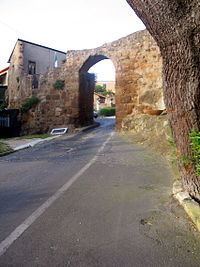Demonym(s) Ardeatini Population 49,019 (30 Jun 2015) Local time Tuesday 5:17 PM | Elevation 37 m (121 ft) Area 50 km² Postal code 00040 | |
 | ||
Frazioni Banditella, Nuova Florida, Castagnetta, Castagnola, Centro Regina, Nuova California, Colle Romito, Lido dei Pini, Marina di Ardea, Rio Verde, Tor San Lorenzo, Tor San Lorenzo Lido, Montagnano. Weather 14°C, Wind S at 23 km/h, 79% Humidity | ||
Ardea (IPA: /ar'dɛa/ or /'ardea/) is an ancient town and comune in the Metropolitan City of Rome, 35 kilometres (22 miles) south of Rome and about 4 kilometres (2 miles) from today's Mediterranean coast.
Contents
Map of 00040 Ardea, Rome, Italy
The economy is mostly based on agriculture, although, starting from the 1970s, industry has had an increasingly important role.
History
Ardea is one of the most ancient towns in western Europe, founded about in the 8th century BC was the capital of the Rutuli, mentioned in the Aeneid.
After the Roman conquest, Ardea was most often mentioned in connection with the Via Ardeatina, one of the consular roads, to which it gave its name. Columella owned a farm there.
In 509 BC Lucius Tarquinius Superbus, the king of Rome sought unsuccessfully to take the town by storm, and then commenced a siege of the town. However the siege was interrupted by the revolution which resulted in the overthrow of the king and the establishment of the Roman republic. One of the leaders of the revolution, Lucius Junius Brutus, came to the camp of the Roman army at Ardea and won the army's support for the revolution.
In 443 BC the Volscians laid siege to Ardea. The siege was soon broken by Roman troops under the leadership of Marcus Geganius Macerinus.
During the Second Punic War, it was one of the few cities that refused military support to Rome, and, after the Roman victory, was deprived of its autonomy. In the 3rd-2nd centuries BC it decayed until, in the Imperial Age, it was scarcely populated at all. The 1st century agricultural writer Columella possessed estates there.
After the fall of the Western Roman Empire, Ardea was abandoned. It returned to grow only after the 9th century AD. Its castle in 1118 housed Pope Gelasius II and was later contended among various feudal barons of the area. In 1419 Pope Martin V assigned it to his kinsmen, the Colonna family, who sold it in 1564 to the Cesarini.
In 1816 it became a frazione of Genzano. Starting from 1932, the surrounding area was drained and Ardea began to flourish again, becoming a frazione of Pomezia starting from its foundation around 1948 and an independent municipality in 1970.
Main sights
Remains of the ancient city include the old defensive agger, dating to the 7th century BC and later (4th century BC) updated to larger walls. Archaeological excavations have brought to light four temples, of unknown dedication. Part of the pavement of a basilica (c. 100 BC) have also been found in the area of the ancient Forum. Other sights include:
International relations
Ardea is twinned with:
